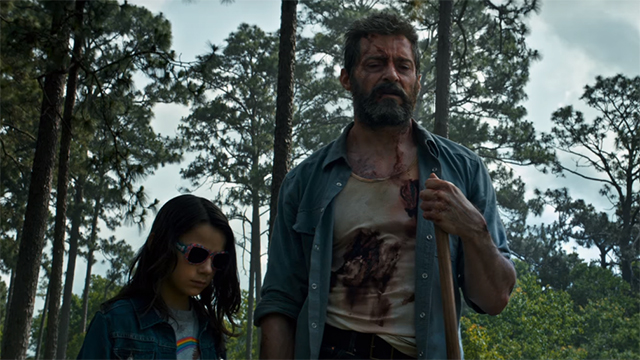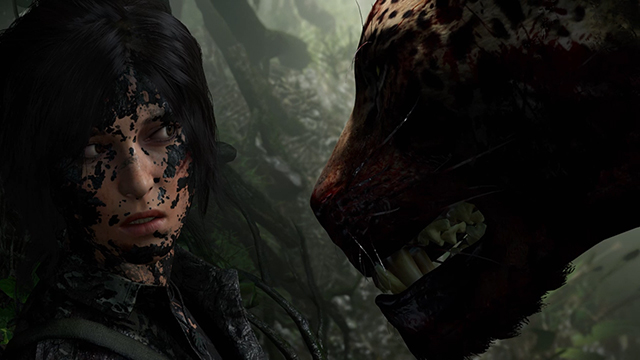GR: I never cared about the people in the first two games because I felt like I was being told to care and not shown why. This game has a few good character moments where Lara and Jonah are just sitting and talking, like when she pulls the parasite out of his arm. What was the impetus to add more of these kinds of moments?
Chayer-Bisson: Normally [in game development], we have prioritization like P1, which means it’s something we will never cut. P2 means maybe cut it if we’re in trouble. P3 means it’s awesome but we may end up cutting a lot of them. In Rise and Tomb Raider 2013, P1s were more plot-driven like ‘I need to go there to get this or I need to get that.’ The second thing [P2] was set piece moments. The third one [P3] was character moments so most of the things to get cut were character moments.
When we sat down together for this game, we decided to switch. We said that P1s will be character moments and we will protect them. P2s will spectacle and P3s will be plot. What was wrong when you don’t have these [character] moments is that Lara can’t say she is sad when she is raiding a tomb. It wouldn’t make any sense. But now you have moments like when Jonah is mending Lara’s back. Moments like that make you see how human she is and her insecurities even though she is confident and strong.
Chabtini: When we created the scene on top of the church, I remember we were presenting it internally because we needed to sell the game internally first. They were sitting the room watching the scene and we saw people crying so we knew this was it. We need to be more character driven instead of plot driven and so we tried to build everything around that.

GR: Those are usually the stories I remember. You usually recall the characters.
Chayer-Bisson: Yes, and that’s why [the 2017 film] Logan was one of my inspirations. I was watching it with my wife and she didn’t understand what the mutants were doing and stuff like that but she loved the movie because she saw the relationship between the father figure and the kid. It’s about Logan being a human and that’s why it’s called Logan.
It’s more than just being a hero or mutant. I loved that I said that we needed to shift more like that. We need to make more of these characters, even if they are heroes, show that they are human and have flaws and are incomplete or broken or they suffered. Or, in our case, that they are insecure and they don’t know where their place in the world is.
GR: Dr. Dominguez is one of those characters and he didn’t seem like much a bad guy in the beginning. Why avoid making him a more cartoonish, maniacal villain?
Chayer-Bisson: Lara needs to understand the limits of her power and what the difference is between right and wrong. Dominguez has a noble goal. He’s fundamentally not a bad person. He’s the hero of his own story and Lara is the bad person of his story. But for Lara, she will grow and mature. She will reach a point in the game by interacting with others—that’s why we talk so much about Patiti—because it’s a game changer for her.
You see how Lara is when she’s at a table when she’s with other people. It’s super awkward. If you talk about Mayan stuff, she’s like ‘[excited inaudible shouting].’ And if you ask her about her weekend, she will be like ‘…So about the pyramids…’ She’s not comfortable.
The question we asked ourselves when we started writing the story was ‘If want this to be the most personal story, what would Lara say if she’s just at the table chilling?’ And we had no idea because she’s always saving people and spending time with dead people. All the time. And we thought if we didn’t know [what she’d say], she probably didn’t either.
But that’s who Lara is: she’s awkward with people. Because she will grow. She’s saving the world but she doesn’t know who that world is. And she needs to know because that’s what it means to be the Tomb Raider: knowing what the stakes are and it has consequences to people that I may not know but I need to care for.
 GR: My favorite thing about the gameplay was being able to exit and re-enter stealth. Was there a reason why you did that?
GR: My favorite thing about the gameplay was being able to exit and re-enter stealth. Was there a reason why you did that?
Chabtini: It makes the player feel that Lara is in control. She gets in and she can get out and play with them. In a sense, she’s mastering [the environment].
Chayer-Bisson: Shadow of the Tomb Raider is about mastering the world. And mastering, for me, is not just controlling it; it’s becoming it. We talked with the team about how she could master that world. Getting the stealth was a core element here because in stealth, you are planning. You are organizing and you see patterns. You are in control.
When you’re in assault, you’re more in reaction [mode]. You don’t plan; you assess. You don’t strike; you shoot. Rise had many more new ingredients that were about explosions, Molotov cocktails, and all of that stuff. In Shadow of the Tomb Raider, we push more mud, vines, trees and we push the stealth way more to the next level so you feel like you are in complete control of the situation.
GR: This game was being made primarily Eidos Montréal with some help from Crystal Dynamics. How was that collaboration?
Chabtini: The magic behind is that Eidos Montréal always worked with Crystal Dynamics on the 2013 Tomb Raider, Rise, and now this one. The thing is that we [at Eidos Montréal] are leading Shadow of the Tomb Raider. We are still collaborating with them in terms of the brand. They are contributing to the vision. We are bouncing ideas. The fact that we have people on Shadow of the Tomb Raider that worked on the previous games makes it way easier to be on brand and relatable to the previous games.
Chayer-Bisson: I was here since the beginning when I was not Eidos Montréal, but at Crystal so evolving was easier for me. I knew where we wanted to go with this at the end for sure. I knew the core team from Crystal when I arrived in Montreal so the communication was easier. Before, it was a smaller team in Montreal and the bulk of the team was at Crystal. For Shadow of the Tomb Raider, we switched it. Crystal built like a quarter of the game.
I still talk to Noah [Hughes], the creative director of Rise. He’s my partner. We worked together on the 2013 Tomb Raider and on Rise. We are always talking. We have to know each other and not have any political barriers. The worst thing you can have is political barriers. When you can just call someone and just talk about it, that’s the recipe [for success].







